How can AI UI capture intent?
Exploring contextual prompt patterns that capture user intent as it is typed
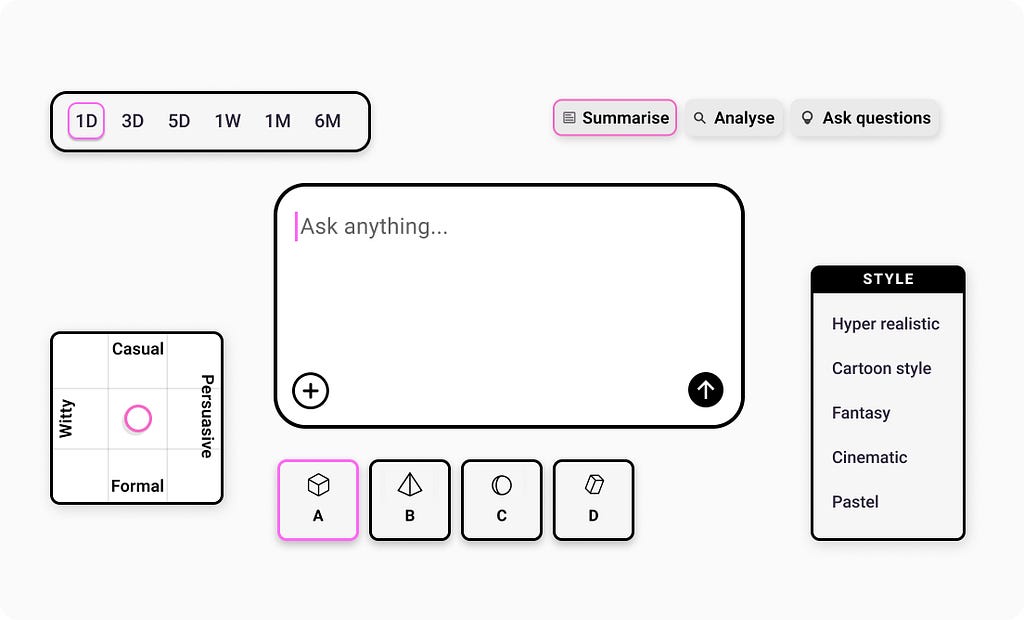
Context management is unarguably one of the most important aspect that provide AI models context to shape their behaviour and results. When users upload documents, ask questions, or provide instructions, they’re essentially teaching AI models how to behave and what outcomes to deliver. Yet despite this fundamental importance, most AI products handle context in surprisingly crude ways.
Current patterns like smart defaults in Claude homepage, context filters in GitHub Copilot or style controls in Adobe Firefly offer a strong starting points but they share a limitation. The smart defaults are either too broad or users must articulate their full intent upfront and then fall back on iterative chat-based back-and-forth to refine context.
This creates unnecessary friction.
Consider common use cases where a financial analyst who uploads a quarterly report, still has to spell out what should be extracted. Or a shopper searching for running shoes on Perplexity still faces broad, unfocused results and must manually narrow them down based upon his preferences.
If context is so important, why do we make users work so hard to provide it?
Contrary, Predictive UX points to an alternate approach. Instead of waiting for users to articulate every step, systems can anticipate intent based on behavior or common patterns as the user types. Apple Reminders suggests likely tasks as you type. Grammarly predicts errors and offers corrections inline. Gmail’s Smart Compose even predicts full phrases, reducing the friction of drafting entirely.

This article explores inline intent refinement to showcase how AI systems predict and surface the most useful prompt improvements as users type, across core use cases like search, information extraction, and content creation.
The goal is to reduce time-to-value and reframe AI as an adaptive partner that anticipates user’s intent as you type.
1. Search workflow context
As AI-powered search grows on platforms like Perplexity and ChatGPT, most queries fall into a few predictable buckets. If systems can anticipate intent, they should surface contextual prompts as chips, sliders, or dropdowns that guide refinement and cut friction.
Few design approaches for common use cases are —

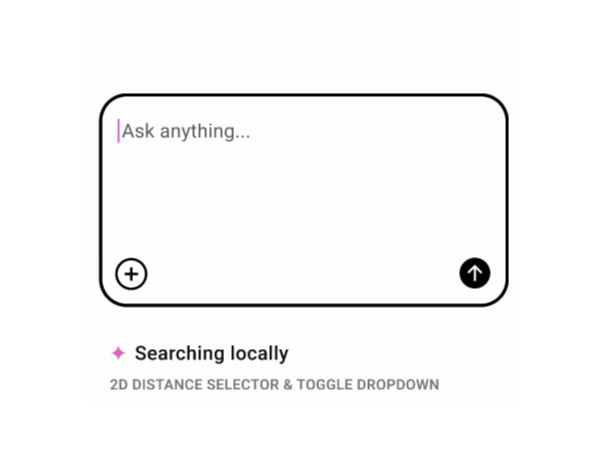
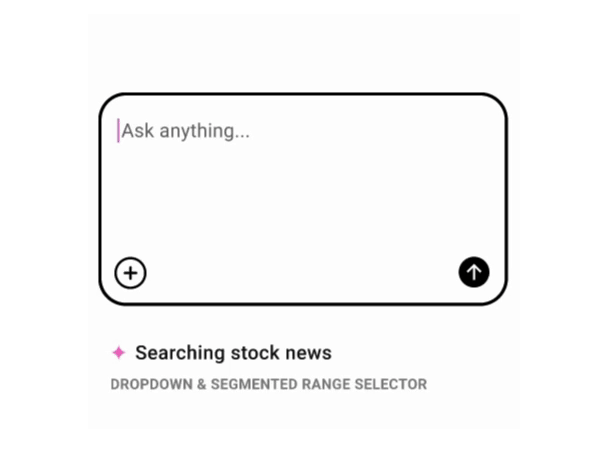
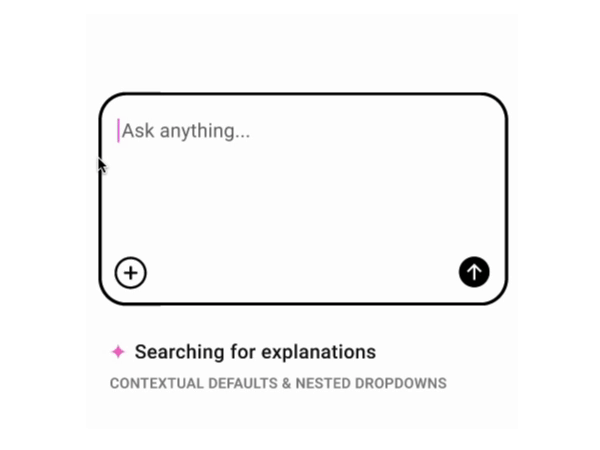
- Contextual presets & dropdowns to choose terrain types (road, trail, treadmill) when searching for running shoes.
- 2D distance selector & toggle dropdown to filter restaurants by proximity and ambience when searching locally.
- Dropdown & segmented range selector to switch between sources (Yahoo, Bloomberg, CNBC) or time windows when tracking Tesla stock.
- Contextual defaults & nested drop-down to adjust response length, audience (designers, engineers, founders), or depth when asking “What is AI UX?”
2. File upload context
When a user uploads a file, the system doesn’t just sit idle, it immediately surfaces context-aware prompts tailored to that file type.
Two approaches to show these smart defaults are —
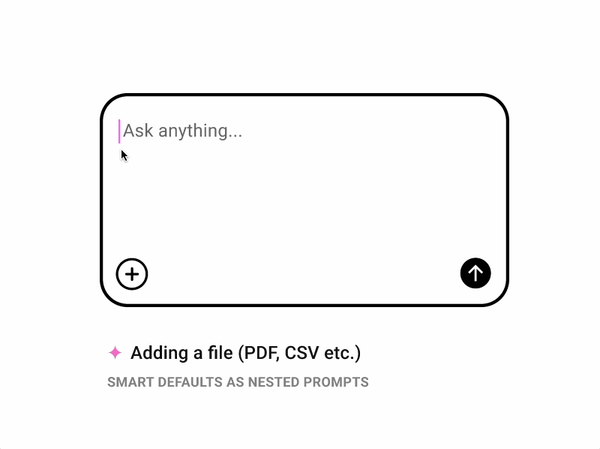

- Nested prompt presets to show expandable menus that cluster related options (e.g. summarize → key takeaways, bullet points, section summaries), helping users navigate structured, multi-step workflows.
- Inline ghost text to show lightweight, in-context hints that adapt to the file (e.g. “Ask me to describe, extract text, or remix” for images, or “Ask me to summarize scenes, create captions” for videos), making the next step feel natural and obvious.
This design turns file upload from a passive action into an interactive entry point, where the AI guides users toward meaningful outcomes.
3. Content Creation Context
When users create content, AI can surface contextual prompts that shape tone, style, and format reducing blank-page friction and guiding them toward tailored outputs.
Some of the distinct approaches are —
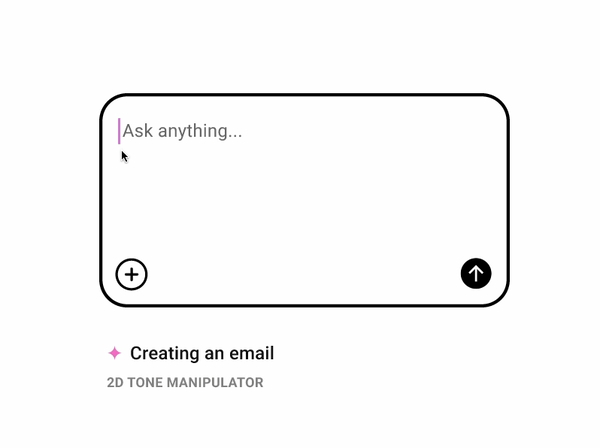
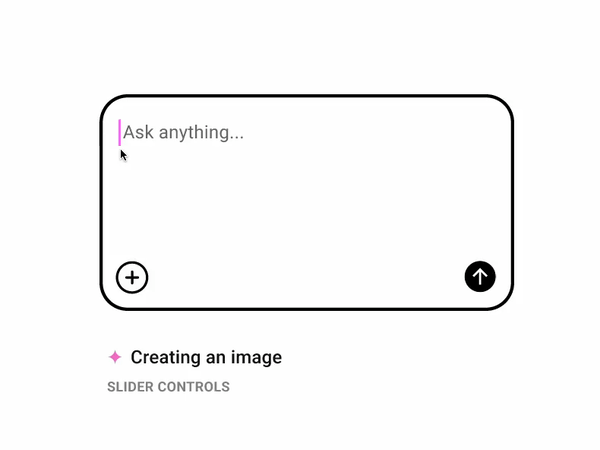
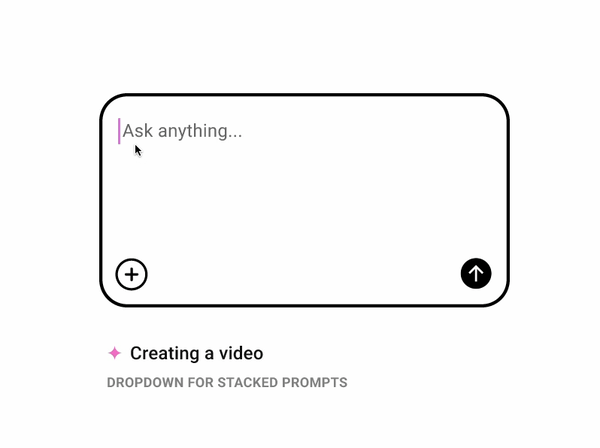
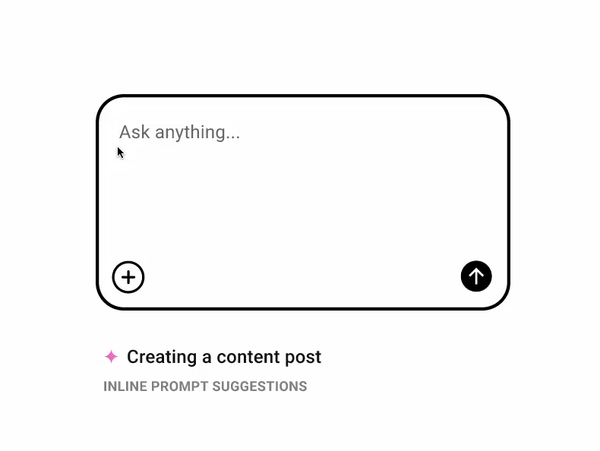
- 2D tone manipulator to adjust the voice of an email (e.g., casual–persuasive or formal–professional) with quick sliders or selectors.
- Slider controls to pick image properties like aspect ratio or variations (e.g., 9:16 for stories, 1:1 for posts).
- Dropdown for stacked prompts to select camera angles in video generation (e.g., medium shot, close-up, bird’s-eye) to control framing.
- Inline prompt suggestions to add topical tags (e.g., AI UX, product design) when drafting a LinkedIn post to steer content direction.
These experiments point toward a fundamental shift i.e AI interfaces become truly intelligent when they anticipate rather than react. Instead of waiting for users to articulate perfect prompts, contextual UI patterns can surface intent naturally whether through adaptive presets for file uploads, dynamic refinement chips for search, or inline tone controls for content creation. Users spend less time explaining what they want and more time refining the results that matter.
Design AI interfaces that read between the lines, not just the lines themselves. Done right, this doesn’t just improve user experience it fundamentally redefines how humans and AI systems communicate.
How can AI UI capture intent? was originally published in UX Collective on Medium, where people are continuing the conversation by highlighting and responding to this story.
This post first appeared on Read More

